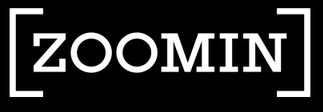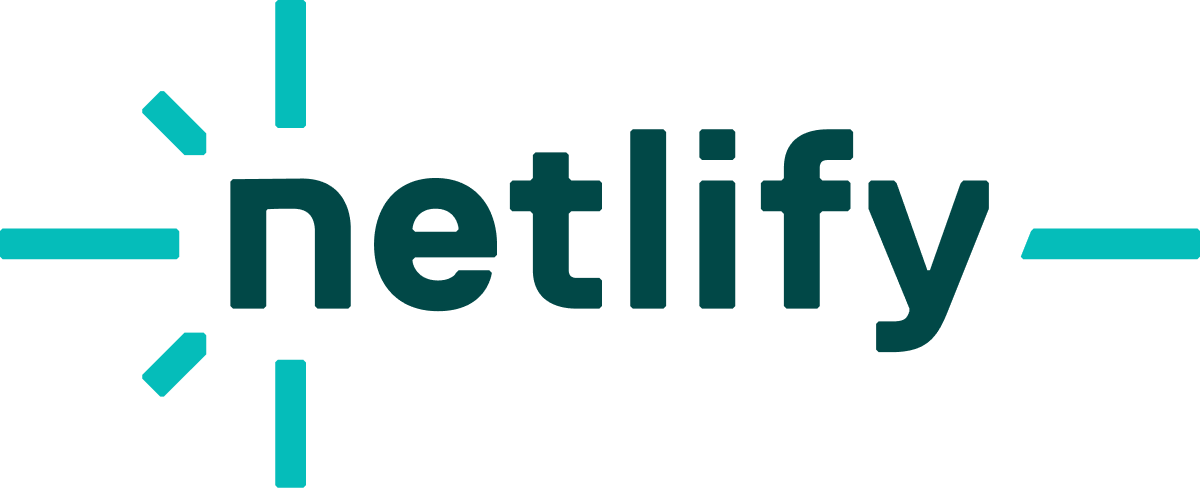Conference Speakers¶

Sofiya Minnath
A Strategic Documentation Template for Startups
For nearly six years, my involvement in documentation across various startups has revealed common challenges. In the early stages, developers, not well-versed in documentation best practices, handle the task. To shape it effectively, they bring in junior writers, creating a cycle of frustration. Writers become uncertain about meeting user needs, and developers attempt various solutions, often resulting in customer complaints, keeping documentation a significant problem.
To address this, companies often bring in managers from other areas of the organization, even if lacking documentation experience, to lead the documentation team. However, this manager's lack of experience can unintentionally hinder providing writers with the right tools, keeping documentation as a pain point. This manager must also communicate with other stakeholders upset with documentation quality and show empathy. That is the starting point, and the journey after that is challenging and intense, pushing me to create a plan to align documentation with the product's plan.
My story is about understanding startup struggles where developers manage documentation and helping them create a plan.
In this session, I'll share a strategic approach to transform startup documentation into a valuable asset. I'll guide you on treating documentation as a product, aligning it with the product roadmap and strategy, and providing practical steps at each phase. Another essential aspect I'll cover is implementing clear guidelines and processes, emphasizing a data-driven approach highlighted by surveys to identify pain points. Throughout the session, you'll learn how to create prototypes for incremental changes and explore the power of A/B testing to secure organization-wide buy-in. Beyond fixing content, this session serves as a practical toolkit, simplifying the intricacies of startup documentation and providing essential strategies for scaling success.
Key Takeaways:
- Navigate documentation challenges in startup environments through a structured, phased approach.
- Strategies for seamlessly integrating documentation into the overall product roadmap.

Dennis Dawson
Graphic Relief: Beyond Flowcharts and Screenshots
When I joined Ripple, we already had comprehensive documentation. While our docs were thorough, I found them dense, detailed, and difficult to parse. They needed reorganization, a new navigation layer, and a lighter touch.
Technical documentation should not be boring or opaque. No one ever said, “yes, that documentation was thorough, but I wish it had been more bland and mind-numbing.”
Over the past two years, I’ve had the opportunity to revise and enhance our documentation in several key ways:
- Reduced cognitive load by adding white space and reinforcing graphics
- Created graphic representations of abstract processes
- Used video to illustrate background workflows
We had several of these updates underway when my manager and I attended Write the Docs Portland 2023. Presentations by Caitlin Davey and Ryan Young gave us confidence that we were making sensible changes, and gave us the vocabulary to explain the rationale behind our enhancements to our stakeholders.
My presentation covers:
- Coordinating with visual designers to create a corporate graphic style
- Using graphics to enhance engagement
- Producing effective educational video on a shoestring
- Working with UX testers to validate and challenge assumptions

Mario Morales
Applying Engineering Principles to Technical Writing
It is common to find these questions in Technical Writing forums on the Internet: Is engineering required for technical writing? Do I need an Engineering degree to become a Technical Writer? We know the short answer is "No," and it is a fact that many technical writers come from different fields and non-technical backgrounds. But we also know that technical knowledge and a fundamental understanding of Engineering are advantageous for the job.
I started my career as a technical writer with a Bachelor of Arts in Language and Literature, so I naturally asked myself those questions at some point, even though I learned programming many years before that. Today, I have a master's degree in Applied Informatics, and I've been a technical writer for six years. During this time, I've dealt with many different documentation needs from customers of diverse industries. I've also learned from my fellow team members, including UX designers, QA, Data, SRE, and software engineers.
I am still convinced that you don't need an engineering degree to be a successful technical writer, but I've found out you can apply some basic engineering principles to it. In this talk, I'll share some insights on how to apply engineering principles to the technical writing discipline, including the following:
- The Engineering Black Box
- What's at the heart of Engineering?
- The Engineering Design process
You don't need an Engineering degree to enjoy this talk!

Nellie McKesson
Make It Make Semantic Sense: Semantic Strategies for All of Us
Semantics: a word that inspires eyes to glaze over in almost any crowd, and yet is one of the most fundamental tools for creating accessible and scalable content.
I’ve put words in a lot of different places as part of my role as a toolchain developer. I’ve helped math scholars get their papers published in print; I’ve helped build GUI tools for computer experts to streamline their writing process; I’ve built processes for major publishers to get best-selling novels out into the world as both print and ebooks simultaneously; I’ve helped technical documentation teams create websites, books, and whitepapers all from the same content. And there are a few things I’ve learned in the process:
Good writing is more than good words. Good writing is easy to navigate, it reaches people of all levels of ability, and it retains its meaning even when the presentational format changes.
One element that powers all of those things is good semantics. Semantics describes the parts of a written document: which bits are the headings? Which paragraphs are body text? Which blocks are part of the main narrative, and which are asides? While it may seem basic, this information is crucial if you want to create content that can flow into streamlined workflows and reach all users, and it’s something that is often invisible and often overlooked.
In this presentation, I’ll cover:
- A definition of semantics, in the context of writing and documentation
- Why are semantics good and important?
- The importance of differentiating semantics from visual design
- What strategies I have worked with when helping authors of differing technical backgrounds apply good semantics
- Who, what, when, and how: choosing a good semantic strategy for your own work or team, and finding the tools to support it

Robert Delwood
The Four Stages of OpenAPI
For API documentation, you made the decision to move to OpenAPI. OpenAPI is a remarkable specification and framework. It became the industry standard in 2016. This standard provides API documentation with structure, consistency, and versatility. This is an important milestone in that it moves API documentation away from Word files, PDFs, and other unstructured formats.
However, making that decision is only the initial step on a longer journey:
- New documentation, API documentation writers
- Documentation only, API documentation writers and developers
- Prototyping, API documentation writers, and program managers
- API-First, API documentation writers, and developers
The complexity increases as you go down the list as do the rewards. The product gets more mature, and the team, more experienced. Each stage has its own set of challenges and different team members supporting it. The other realization is that API documentation is no longer a writer-only endeavor. It takes a team.
In this presentation, I will share these four stages. This helps you understand the project in a long-term view. It also enables you manage to expectations when getting started. I discuss:
- Why you want to follow this progression,
- What each stage means,
- What the expectations are.
You don’t have to already be an API documentation writer. You may be interested or new to the field and want to know more. Neither do you have to know programming or a specific programming language to begin. As long as writers treat this as a craft, the documentation will seem to write itself.

Steven Hicks
Misadventures in SEO: How to self-sabotage your documentation
We can all agree — documentation is a critical feature in the developer experience of any product. When your docs are sparse, confusing, or nonexistent, developers can't use your product.
What if your docs are great, but no one can find them? I assure you, from personal experience — you'll end up with frustration all around. From the docs team who can't figure out what's happening, to the users who can't find anything, to the support team that must memorize the entire documentation structure in order to help users.
In this session we'll look at my team's misadventures in the SEO of our product documentation. Our best intentions were outdone by our misunderstanding of SEO concepts, and we accidentally eliminated the ability to search our documentation.
It was a difficult hole to crawl out of, but we got there. I'll share the steps we've taken that have helped, the steps that haven't helped, and how we're applying this learning to our other documentation sites.
You'll leave with a better understanding of SEO, and how it applies to your product's documentation.

Calvin Fung
Beyond Words: Strategies for Leveling Up Your Tech Writing Career
Leveling up your tech writing career can be difficult. You can get plenty of work done, but talking about it and presenting it in a meaningful manner can be challenging. You can do everything possible to stay on schedule, but the folks you work with don’t always operate on the same time table. You can have a great quarter and deliver a bunch of impactful projects, but struggle to replicate that success in the next quarter. And the one after that.
I’d like to share some of the solutions I’ve found to these problems.
My name is Calvin Fung and I have seven years of technical writing experience. I have written standard operating procedures (SOPs) for the manufacturing industry and user guides and API documentation for software developers. I currently lead a team of writers in managing one of the largest doc sets in cloud computing at AWS.
In this talk, you’ll learn about some of the practical steps I’ve taken to answer questions like these:
- How do I determine what to work on next?
- How do I figure out what to learn to continuously expand my skill set?
- How do I promote my work so it gets recognized?
- How do I collaborate with people from other teams and turn them into my biggest fans?
- How do I communicate the right details to my leadership team without drowning them in information?
This is not a theoretical talk - I will show you the artifacts that I actually use day-to-day. While there are many ways to do this, I’m sharing with you what’s worked for me and what I like to share with other writers. They’ve found it useful and I hope you do too.

Candy Morton
Case study: How we delivered a seamless in-product help experience
At Automation Anywhere, we realized we had a problem. When users needed technical content while they were using our products, they were being shifted out of the product and navigated to our documentation portal in an external browser. This created a fragmented journey that disrupted the seamless product experience we wanted for our customers.
So, we embarked on a project uniting the power of our UX and docs groups to streamline the user experience and deliver all the product information our users needed from right within the product. Our vision was to deliver exceptional contextual user experience in line with Automation Anywhere’s high standards for CX, that would ultimately increase product adoption, customer satisfaction and growth.
I’ll share the steps we took to bring this vision to life. I’ll explain the process, tooling and internal collaboration required to create a unified experience for users. I’ll also reveal the productivity gains we achieved by reducing our reliance on our development group, as well as digging into the results we’ve seen so far.

Shawn Aldridge
Design Reviews, capturing context at speed
I've got two simple questions for you, and two upsetting ones.
We'll do the easy ones first. What's the oldest software system that you personally work with regularly, and what does it do? I would have to check GitHub dates, but at Tinder off the top of my head I'd guess our iOS purchase flow, and it provides features in exchange for payment tokens.
Now come the upsetting ones. How does it do that, and why does it do it in that way? Answering these two would take me hours to talk through, and days or possibly weeks to research, and that's assuming all of the information is actually available today (it's not).
Decisions about how to build software are made in environments teeming with context. They are influenced by factors ranging from the current financial state of a company to the personal preferences of the engineer(s) building them. In any given distributed system you may find incomplete features, abandoned migrations, and compromises made that have changed API contracts, but greatly eased integrations. Many, if not all, of these factors may be invisible once code has shipped.
At Tinder some of our teams try to capture this valuable context, as well as share engineering standards and preserve tribal knowledge, via Software Design Reviews. We recently formed a Design Review Working Group to improve this process, as well as to make it more generally available across our engineering teams. In this talk I will share the findings of our research, what we ended up implementing, and what results it has shown in the past 12 months of general availability.
Questions in this talk that others might find informative:
- How did we minimize documenter effort, while improving operational excellence, and optimizing for documentation that remains useful over time?
- How did we alter our design review documentation system to serve the needs of diverse, cross-functional teams?
- How did we build broad consensus across an engineering department with little cross-team structure?

Michelle Irvine
Quantifying the Impact of Documentation: Findings from DORA Research
In 2023, the DORA research program found that high-quality documentation leads to 25% higher team performance relative to low-quality documentation. This is just one of a set of findings about internal documentation from our 2023 State of DevOps Report.
Our research program is industry-wide, and internal documentation is only one of the constructs that we study and measure. This means that we have respondents with varying degrees of contexts and documentation quality. We can also analyze the impact of the different constructs on each other. For example, we can quantify the impact of documentation quality on the implementation of security practices.
In this talk, I will:
- Present our findings about the impact of quality documentation, including why documentation is like sunshine.
- Give some insight into the creation and maintenance of quality documentation.
- Describe ways that you can communicate the value of quality documentation, and metrics that might be helpful in your own context.
- Discuss how these findings apply to different types of documentation, including end-user documentation.
This talk is valuable for anyone in technical roles such as developers, technical writers, and for leaders looking to improve the quality of their organization’s documentation and other performance metrics.

Tom Edmonds
"The vibes were off": Adapting Agile story points estimation to technical writing
As writers and documentarians, being tasked with figuring out how to measure our productivity with tidy quantitative metrics can be an anxiety-inducing, onerous, or seemingly impossible task.
Time tracking is tedious and impractical when you're slicing your time among many simultaneous assignments, and it doesn't account for the difference in cognitive load between an hour spent editing existing content versus an hour researching or writing about a complex new topic. Tracking word counts is not only impractical but also counter-intuitive when your goal is to be concise, and it fails to capture the research, planning, review, and editing that also goes into the process.
Some technical writers might be tempted to redirect the attention of their higher-ups toward more qualitative accomplishments or markers of productivity. Others might tap their well-honed storytelling skills to try to convince leaders that many traditional productivity metrics won’t work for technical writing teams and that our experienced and informed – but ultimately subjective – assessments of our workload and capacity will have to suffice.
But what happens when you decide to tell a different story? What happens when you embrace quantitative metrics by borrowing a proven strategy from developers?
This is the story of how my team adapted the concept of Agile story points estimation to our technical writing work, including:
- How and why we moved away from “vibes-based” estimation of workload and capacity based on past experience and gut feelings toward a more systematic, consistent, and data-driven model for scoping our work.
- Our methodology for numerically scoring each task in a way that attempts to account for all aspects of the work and minimize subjectivity.
- How we’re collecting and analyzing story points data.
- What worked, what didn’t, what we’ve learned, and what we’re still figuring out.

Taylor Krusen
Code in Content: Using Dynamic, Interactive Elements in your Technical Writing
As modern web technology has evolved, documentation has grown with it – leading to documentation that delivers an app-like experience to end users. For technical writers, there’s a growing emphasis on integrating code and logic directly into your content. New tools, like MDX and Markdoc, have emerged to bridge that gap, making it possible for writers to create dynamic, interactive content while writing in familiar Markdown syntax. But combining code and content can be challenging, add complexity, and create new and interesting ways to break things. So how should we think about and use these new tools to supplement our technical writing?
This talk will cover the “why” and “how” behind the code-in-content trend and examine the technologies powering it. We’ll introduce and compare Markdoc with MDX using real examples to explore the authoring experience they provide. We’ll take a pragmatic look at the practical benefits and tradeoffs of these tools, then consider how they fit into your writing by centering the end-user’s experience. You’ll leave this session with the knowledge and context you need to start using code in content, ready to transform your documentation into a powerful educational tool (without overdoing it).

Alistair Gray
Sociological considerations in designing an internal documentation platform
Internal documentation – in this talk, canonical reference material written by software engineers for their colleagues – is crucial for the smooth functioning of a company, as can be attested to by anyone who’s been woken at 3 AM by an automated detector that nobody seems to have explained anywhere. But it’s also subject to very different tradeoffs than end-user-facing documentation is; prototypically, you’d imagine a lot more docs, subject to fewer review cycles, written by teams with very different norms, for which a content strategy is way harder to direct from on high.
The upsides of those trade-offs are very real: internal docs can make some simplifying assumptions about their audience, are lower-friction to edit, and are less constrained by a need to fit into a company-wide content strategy. Magnified by scale, however, the downsides of these trade-offs – like how much easier it becomes to let docs go stale or become fragmented – can grow into systemic sociological issues with internal docs culture.
So, what can we as documentarians do to ensure that our internal docs overcome those issues and remain effective? I’ll be talking about my experience at Stripe’s team tasked with answering that question. Most of my talk will focus on what sociological issues we’ve found in our internal documentation posture (many of which we think are generalizable!) – ones around freshness, fragmentation, discoverability, and more – as well as what opinionated unique features we’ve designed into our in-house internal docs platform to combat those issues. We think our approach has helped (developer satisfaction with Stripe-internal documentation has gone way up!) and want to share how we’ve recognized and remediated these kinds of problems.









